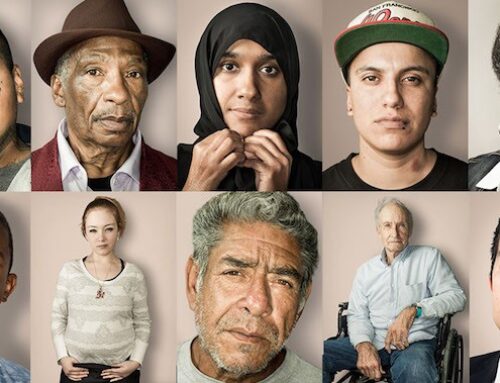The current coronavirus pandemic has caused a lot of stress, fear, confusion, and uncertainty for the future in people and businesses alike, all over the world. To face the coming challenges, it is critical that people know how to respond to the psychological, social, and economic challenges created by CoVid-19.
While there are several factors shaping how societies are dealing with this novel virus, many of the diverging approaches to manage the global pandemic can be attributed to culture.
Political systems, societal structures, and emergency response protocols are all results of the collective behavioural preferences of the group that designed them. People from different cultures aren’t just randomly different from one another. They differ in quite specific, often predictable, ways. This is because each culture has its own way of thinking, its own values and beliefs, and different preferences placed on a variety of different factors.
Simply put, culture impacts everything groups of people do. How different individuals, societies, organisations or governments solve problems, how they manage crisis and respond to a crisis like the Coronavirus Pandemics and eventually how public reactions and behaviours are shaped in times of uncertainty and ambiguity are all heavily influenced and shaped by values, traditions and the culture of these different societies. This is a clear indication to what extent a culture programmes its members to feel either uncomfortable or comfortable in unstructured situations.
Before we compare some of these crisis management styles, let’s look at a toolset which professionals in the field of interculturalism often refer to as cross-cultural dimensions. These dimensions are interculturalist’s measuring units. They allow practitioners to compare behaviour preferences across cultures, based on robust data collected in nation cultures all over the world. Dimensions indicate how people act along a certain spectrum: We either value universally applicable laws and rules, or we tend to weigh particular situations separately. People are either more long-term oriented or short-term motivated. And so on. Among Hofstede’s cultural dimensions, most relevant in assessing the response to the coronavirus pandemic are
- Hierarchy vs. egalitarianism (PowerDistance)
- Individualism vs. Group Orientation
- Task vs. Relationship (Masculinity vs. Femininity)
- Low Uncertainty Avoidance vs. High Uncertainty Avoidance
We have witnessed in countries like China, South Korea, Taiwan, and Singapore the response to the outbreak was rather swift and governments clamped down rigorously. This can be seen as a reflection of the fact that the cultures in these countries tend to be quite hierarchical, collectivist, relationship-focused with low uncertainty avoidance.
On the other hand in Europe, as the virus began spreading we saw that the responses to the crisis were as dissimilar as the cultures of the continent are. In Mediterranean cultures like Spain and Italy which are one or two degrees less hierarchical, group-oriented, and relationship-focused (compared to the above mentioned Asian cultures), the reaction to the health threat was much less immediate. Only as the rapid spread of CoVid-19 became apparent did the authorities dial up the severity of countermeasures. Keep in mind as well, that – as part of the European Union – Italy and Spain have a responsibility to coordinate border shutdowns with their EU neighbours, since this restricts the free movement of people, goods, and services among the countries which are part of the Schengen agreement.
This is also the case for Austria, Germany, or France – three countries in which individual civil liberties are highly valued and not easily curtailed. Leaders in these countries only gradually gave in to the warnings of virologists and health experts. It was only with hesitation that German authorities imposed curfews and a piecemeal lockdown of public life.
Then, why is it that the mortality rate of CoVid-19 patients in Italy is so much higher than in Germany? Experts are still examining this, and it unsure if culture plays a role here. One aspect to consider, though: Italian households often still consist of three generations under one roof, whereas Germans tend to leave the nest in their early 20s.
Then we have countries like Iran where the government’s leadership’s repressive, theocratic political and religious system has played a role in the, especially high toll that coronavirus is taking on the Iranian people.
The other group currently on display are countries like the United Kingdom or the United States – two countries like-minded in many of their cultural values. In fact, almost all Anglo-Saxon cultures, including Australia and New Zealand, tend to rank very high on the individualism and egalitarianism scales. Personal rights and individual freedoms are paramount in Anglo cultures and any attempt at restricting these rights are typically met with fierce public resistance. Combined with a sense of exceptionalism, these countries are exploring their own path in the fight against the coronavirus.
In the end, no matter which region in the world is responding most efficiently or not; CULTURE is shaping the way they are managing the crisis.
To face the coming challenges in our homes, schools, workplaces and the world at large, it is important to strategise the most effective and practical solutions. To do that, we need to understand the cultural differences that created these different reactions and behaviours. Feel free to get in touch so we can discuss how I can help you manage this crisis, through this global shift, both collectively and personally.







